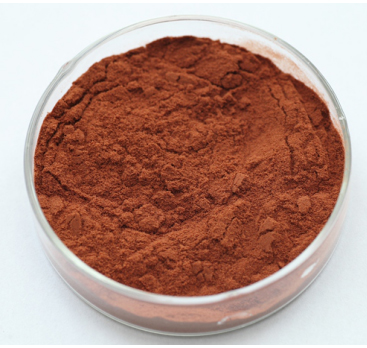Good Quality for Grape seed extract in Philippines
Good Quality for Grape seed extract in Philippines Detail:
[Latin Name] Vitis vinifera Linn
[Plant Source] Grape seed from Europe
[Specifications] 95%OPCs;45-90% polyphenols
[Appearance] Red brown powder
[Plant Part Used]: seed
[Particle size] 80 Mesh
[Loss on drying] ≤5.0%
[Heavy Metal] ≤10PPM
[Pesticide residue] EC396-2005, USP 34, EP 8.0, FDA
[Storage] Store in cool & dry area, keep away from the direct light and heat.
[Shelf life] 24 Months
[Package] Packed in paper-drums and two plastic-bags inside.
[Gerneral feature]
- Our product has passed the ID test by ChromaDex, Alkemist Lab. and other
third-party authoritative testing institutions, such as detection;
2. The pesticide residues match (EC) No 396/2005 USP34, EP8.0, FDA and other foreign pharmacopoeia standards and regulations;
3. The heavy metals in strict accordance with the foreign pharmacopoeia standard controls, such as USP34, EP8.0, FDA, etc.;
4. Our company set up a branch and import raw materials directly from Europe with strict control of heavy metal and pesticide residue. Aslo ensure the procyanidins content in grape seed is more than 8.0%.
5. OPCs over 95%, polyphenol over 70%, high activity, the oxidation resistance is strong, the ORAC more than 11000.
[Function]
Grapes (Vitis vinifera) have been heralded for their medicinal and nutritional value for thousands of years. Egyptians ate grapes a very long time back, and several ancient Greek philosophers spoke about the healing power of grapes — usually in the form of wine. European folk healers made an ointment from the sap of grapevines to treat skin and eye diseases. Grape leaves were used to stop bleeding, inflammation, and pain, such as the kind brought on by hemorrhoids. Unripe grapes were used to treat sore throats, and dried grapes (raisins) were used for constipation and thirst. Round, ripe, sweet grapes were used to treat a range of health problems including cancer, cholera, smallpox, nausea, eye infections, and skin, kidney, and liver diseases.
Grape seed extracts are industrial derivatives from whole grape seeds that have a great concentration of vitamin E, flavonoids, linoleic acid and phenolic OPCs. The typical commercial opportunity of extracting grape seed constituents has been for chemicals known as polyphenols having antioxidant activity in vitro.
Product detail pictures:

Related Product Guide:
We generally continually give you quite possibly the most conscientious shopper company, and the widest variety of designs and styles with finest materials. These endeavours include the availability of customized designs with speed and dispatch for Good Quality for Grape seed extract in Philippines , The product will supply to all over the world, such as: Qatar, Cyprus, Moscow, Due to the stability of our items, timely supply and our sincere service, we are able to sell our merchandise not only over the domestic market, but also exported to countries and regions, including the Middle East, Asia, Europe and other countries and regions. At the same time, we also undertake OEM and ODM orders. We will do our best to serve your company, and establish a successful and friendly cooperation with you.
https://rover.ebay.com/rover/1/711-53200-19255-0/1?ff3=2&toolid=10039&campid=5337984417&item=122211674115&vectorid=229466 affiliate link Amway Nutrilite Double X dietary Supplement 31day supply with case EXP 08/2018
Pumpkin pie smoothie bowl
Ingredients:
For the pumpkin pie:
1 1/2 cups baked and cooled pumpkin. You can bake your pumpkin but its faster if you boil it.
1 3/4 cups vegan milk
3 ripe persimmons
cinnamon
nutmeg
clove
cardamom
vanilla bean or vanilla extract
*add in some protein powder if you wish!
Blend all these ingredients and pour into your favorite breakfast bowl!!! Now its time to get out your toppings! Here is what i used in the video but feel free to top your smoothie with anything you want!
Toppings:
Pumpkin seeds
Chia seeds
hemp seeds
dried cranberries
organic cornflakes
coconut sugar
cacao powder
Enjoy!!!
-~-~~-~~~-~~-~-
Please watch: “Healthy Chocolate Vanilla Raspberry Sundae – Vegan Summer Ice Cream”
-~-~~-~~~-~~-~-
The product classification is very detailed that can be very accurate to meet our demand, a professional wholesaler.







